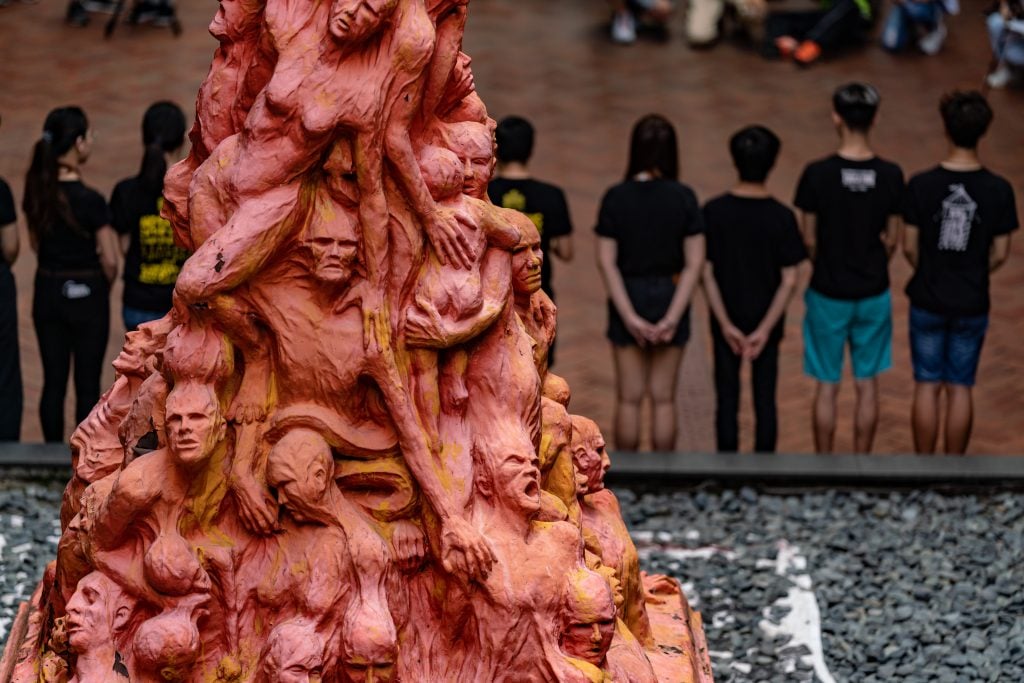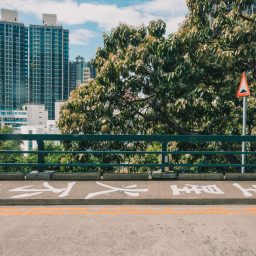A monument to the lives lost in the 1989 Tiananmen Square massacre has been unceremoniously removed from view in Hong Kong. Now, the work’s creator, Danish artist Jens Galschiøt, fears it will be destroyed.
The sculpture, a 24-foot-tall column of imbricated bodies called Pillar of Shame, was erected at Hong Kong University (HKU) in 1997—the same year government control of Hong Kong was transferred to China—to commemorate the eighth anniversary of the Tiananmen crackdown.
The statue has remained in place on the campus since then, despite frequent attempts by the state to erase references to the Tiananmen incident. However, that changed this October, when liquidators of the now-dissolved Hong Kong Alliance in Support of Patriotic Democratic Movements of China, which worked with Galschiøt to install the sculpture, received a letter from the HKU ordering the artwork to be removed in a week’s time.
Now, it seems the school has started the process on its own.
According to accounts on social media and from the artist himself, the school surrounded the sculpture with plastic barriers and security guards today, possibly with the intention of destroying it. The Guardian reported that guards blocked reporters from approaching the statue, and attempted to prevent media members from filming.
“I’m totally shocked,” the artist said in a statement shared with Artnet News. “It is completely unreasonable.”
“If they destroy my work, I’ll seek compensation and demand the remaining pieces be returned to Europe,” the artist added to the Guardian.
After on-the-ground reports about the activity around the sculpture began to circulate online, Hong Kong University sent out a press release confirming that its administrators had indeed chosen to remove the object. Their decision, the announcement noted, was “based on external legal advice and risk assessment for the best interest of the University.”
“No party has ever obtained any approval from the University to display the statue on campus, and the University has the right to take appropriate actions to handle it at any time,” the press release went on. “The University is also very concerned about the potential safety issues resulting from the fragile statue. Latest legal advice given to the University cautioned that the continued display of the statue would pose legal risks to the University based on the Crimes Ordinance enacted under the Hong Kong colonial government.”
The University further clarified that the statue would be put in storage while it seeks “legal advice on [an] appropriate follow-up action.”
Galschiøt explained that, since being notified of the letter in October, he has repeatedly contacted administrators at HKU in an attempt to have Pillar of Shame safely relocated to Europe rather than be destroyed. “It has been completely impossible to get in touch with them,” he said. “All my attempts to contact them have been rejected and my lawyer in Hong Kong has also tried to contact them, but failed.”
In an email, the artist encouraged his supporters in Hong Kong to “document everything that happens with the sculpture.”
In November, Galschiøt penned an open letter to the school, calling on its administrators to cooperate with him in moving the artwork.
“I believe it is important to preserve the history of any country, and I am therefore sorry that my monument, which is a memorial to the events at The Tiananmen Square 1989 in China, is no longer welcome,” he wrote in the document. “Of course, I would very much have preferred for the monument to stay at The University of Hong Kong, where it has been for 24 years. However, in full collaboration with both the university and the Hong Kong authorities, I will remove the sculpture and send it to Denmark.”









